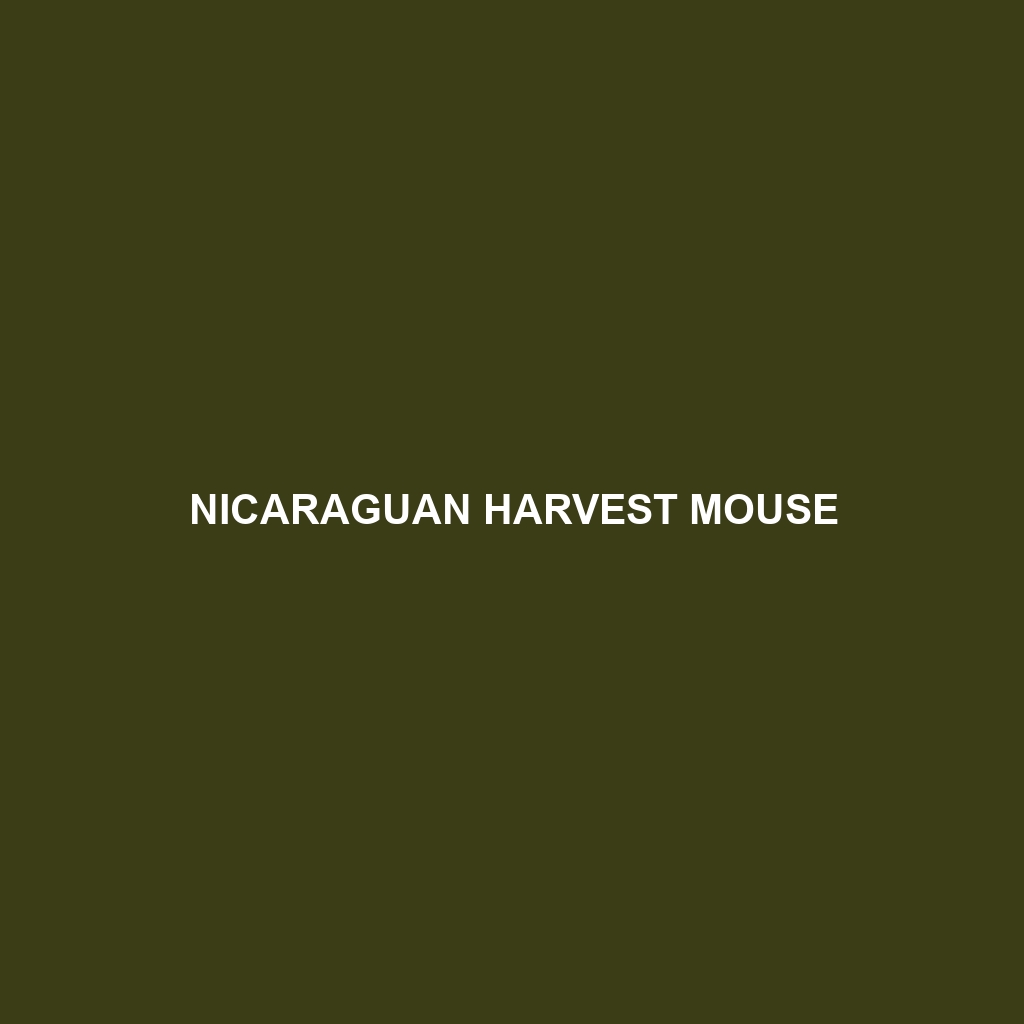Nicaraguan Harvest Mouse
Common Name: Nicaraguan Harvest Mouse
Scientific Name: Reithrodontomys nitidus
Habitat: The Nicaraguan Harvest Mouse is primarily found in the grasslands and agricultural areas of southern Nicaragua. These areas are characterized by a warm, tropical climate and rich biodiversity. It often inhabits regions near rivers and wetlands, which provide ample food and shelter. Additionally, this species is commonly located in cultivated fields where it thrives on the abundance of plant materials integral to its lifestyle.
Physical Characteristics: The Nicaraguan Harvest Mouse typically measures about 15 to 20 cm in length, including its tail. Its fur is a soft brownish color with lighter underparts, providing excellent camouflage in its natural habitat. One distinctive feature of this mouse is its large eyes which enhance its vision, an adaptation beneficial for nighttime foraging. Its ears are also relatively large, further assisting in hearing potential predators.
Behavior: Known for its agile and inquisitive nature, the Nicaraguan Harvest Mouse exhibits predominantly nocturnal behavior, foraging primarily under the cover of darkness. It is a social animal that often creates complex burrow systems for shelter and nesting. These mice communicate with each other through a variety of vocalizations and body language, which can include tail movements and grooming rituals that reinforce social bonds.
Diet: The diet of the Nicaraguan Harvest Mouse consists mainly of seeds, grains, and leafy green plants. It exhibits granivorous feeding habits, often gathering and storing food during the harvest seasons to ensure survival during leaner times. The mouse’s foraging behavior is critical for seed dispersal, contributing to the growth of the plant population in its ecosystem.
Reproduction: The reproductive habits of the Nicaraguan Harvest Mouse typically occur during the rainy season, which ensures a steady food supply for nursing mothers. Breeding can happen several times a year, with litters averaging about 4 to 6 offspring. Neonates are born hairless and blind, relying completely on maternal care during the initial weeks of life. Notably, mothers are known to create warm, safe nests from grasses, providing security for their young until they are ready to venture out.
Conservation Status: Currently, the Nicaraguan Harvest Mouse is classified as ‘Vulnerable’ on the IUCN Red List due to habitat loss and agricultural expansion. Ongoing conservation efforts aim to protect its natural habitats and mitigate human-wildlife conflicts that threaten its population.
Interesting Facts: The Nicaraguan Harvest Mouse is known for its remarkable climbing abilities, often seen scaling low branches in search of food. Additionally, this species is an integral part of the diet of various predators, including birds of prey and snakes, playing a crucial role in maintaining the balance of its ecosystem.
Role in Ecosystem: As a seed disperser, the Nicaraguan Harvest Mouse contributes significantly to the ecological health of the regions it inhabits. By feeding on seeds and grains, this mouse aids in plant reproduction and growth, supporting other wildlife species. Its role as both prey and a consumer of plant materials makes it essential for maintaining ecological dynamics and promoting biodiversity.
